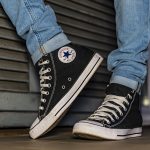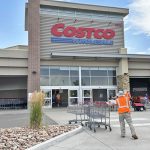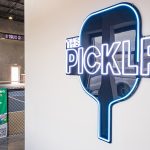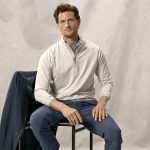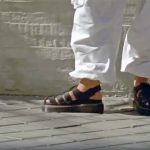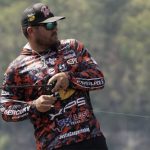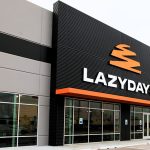At Nike’s shareholder meeting held last week at its Beaverton headquarters, CEO Mark Parker spent much of his presentation detailing how the company’s commitment to innovation, connections with athletes and consumers, and inspiring stories helped drive the company’s highest topline growth in 15 years in its fiscal year ended May 31. Yet he ruefully described bottom-line results as only “solid” as even the sporting goods giant couldn’t make up for the volatile global economy.
“We had a good year,” said Parker. “However, we're not satisfied with good or delivering just solid profitability. We aim higher than that and we remain focused on delivering earnings growth that exceed our revenue growth in the long term.”
Impacted by increasing costs for labor and materials, Europe's sovereign debt crisis as well as currency fluctuations, Nike’s EPS rose 8 percent in its last fiscal year, half the 16 percent gain in global revenues.
“These headwinds – while significant and ongoing – did not deter us from delivering appropriate returns to our shareholders,” added Parker. “Both revenues and earnings per share hit new record highs and throughout the year we leveraged our size to manage down costs.”
He also noted how the company was able to raise prices across much of its product line and increase its SG&A rate at a lower rate than revenues while continuing to “invest in products and services that resonate with athletes and consumers all over the world.”
With its stock hitting an all-time high earlier this year and continuing to trade near $100, Parker was talking to a friendly crowd. Shareholders were also rewarded with the announcement just prior to the meeting that its board had approved a new four-year, $8 billion stock buyback program.
Indeed, Parker spent much of his presentation discussing the many drivers of its top-line growth. The Nike Brand saw a 16 percent gain in its last fiscal year to $21.1 billion, with increases in all key geographies and all seven of its key global categories. Direct-to-consumer including its 826 company-owned stores and e-commerce – grew 21 percent to $3.5 billion with online sales expanding 20 percent. Converse grew 17 percent to $1.3 billion, up from a just over $200 million when Nike acquired the brand in 2003. Parker described Converse as having “terrific momentum.”
Overall, Parker said the growth illustrates Nike’s success in tapping consumer demand, connecting with consumers, and an overall “significant appetite” for sports and innovation across the world. Said Parker, “Those three things – passion for sports, game-changing innovations and those consumer connections are what motivates us and drives us inside this company. They give us focus and they shape our potential going forward. And we are relentless about pursuing that potential.”
On the innovation front, Nike has ”more ideas and possibilities than ever we could or even should pursue” but continues to narrow that focus down to those that have “the biggest potential for return.”
Heralding the 2012 fiscal year as the “most exciting year for Nike innovation” in his 33 years with the company, Parker particularly singled out the Nike+ FuelBand, which enables athletes to measure personal goals and compare them with others, as the “must-have product of the year.” He added, ‘Digital technology is a vast frontier that is changing sports along with every other aspect of life and business. And we’re doing our very best to own and accelerate that evolution in our industry.”
In apparel, he highlighted Nike’s takeover of the NFL uniform license as raising the bar for technical performance. If footwear, he singled out the Flyknit, utilizing technologies that enables the upper to be made “using little more than thread” to enhance its lightweight and breathable properties but also significantly reducing waste from the upper-production process that’s part of its strong commitment to sustainability. Taking a jab at Adidas, which came out with a similar one-piece knit upper runner during the London Olympics, Parker said, “I'm not surprised at the admiration and the imitation it’s generated.”
Flyknit also holds an “amazing opportunity” to extend the technology across its products and its brands. Indeed, he noted that while Nike is capable of “quick strike eruptions” with innovations like the Flyknit and FuelBand, “significant innovations are more often the result of long-term commitment.”
Among its past innovations, Parker noted that its Lunar series, first launched during the Beijing Olympics, has grown to a $2 billion business at retail. As another example of how Nike leverages technologies, he noted how Nike Free now delivers almost half its revenue outside the running category.
Parker noted that at the close of fiscal 2012, Nike decided to divest two brands Cole Haan and Umbro to better “unlock our growth potential” through its four core brands Nike, Converse, Jordan and Hurley. He noted that at its last investor meeting held in June, Nike reiterated its goal to reach $28-$30 billion in revenues by fiscal 2015 despite the loss of the two brands. Parker added at the shareholder meeting, “I remain confident in that goal even with the leaner portfolio of brands.”
Regarding fiscal 2013, Parker cautioned that the bottom-line challenges are ongoing. Said Parker, “The headwinds of the global economy will likely continue. We are not immune to that impact. No one is. But we have the strength and the flexibility to navigate them successfully.”
He also said to expect more “game-changing innovation” from the company in the current fiscal year, noting that digital technologies will receive a particular focus. He also hinted that Nike would put a major focus on becoming an “advocate” to increase access to sports for young people. Added Parker, “That’s a big challenge but we need an awakening, a movement that will open the eyes and the doors to the benefits of fitness. We’re excited about helping to make that happen.”
Still, he added that athletes continue to inspire its innovation and spent some time touting the successes of many of Nike’s sponsored athletes at the European Football Championships, London Olympics and the NBA Finals. Said Parker, “More than anything this ‘Summer of Sports’ showed that we’re really good at what we do if I may be so bold. And we’re committed to this opportunity and the responsibility that comes with being a leader in our industry. I’m truly more confident than I’ve ever been about our future.”
At the shareholders meeting, eight existing board members, including Parker and co-founder and chairman Phil Knight, were re-elected to Nike's board. Other matters approved included an increase the amount of shares outstanding as well as approvals for compensation guidelines and its long-term incentive plan. A proposal around political contributions disclosures was defeated.
Two shareholders who bought shares in Nike’s 1980 initial public offering attended the meeting and received a round of applause. After Parker noted that Knight had recently been inducted into the Basketball Hall of Fame, the chairman drew laughs for noting that he was both honored and quite surprised by the nomination. Knight quipped, “I can tell you as a senior in Cleveland High School averaging 3 points a game, my old coach is rolling over in his grave.”



